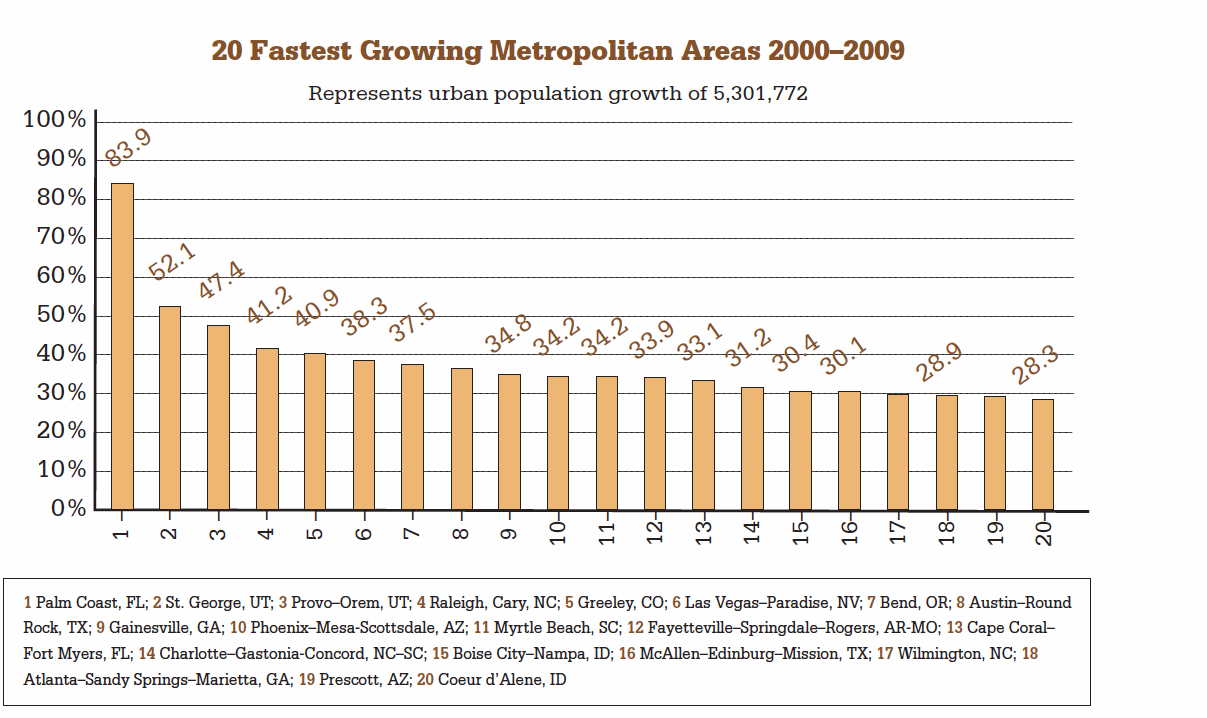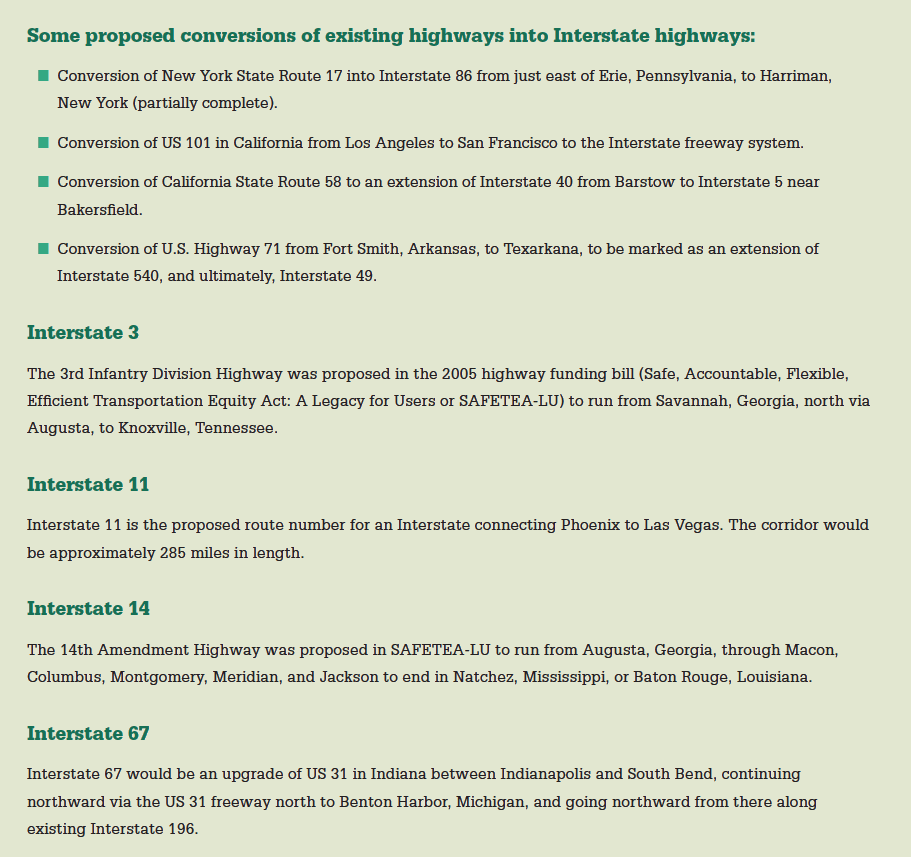AMERICAN ASSOCIATION OF STATE HIGHWAY AND TRANSPORTATION OFFICIALS
TRANSPORTATION REBOOT: Restarting America’s Most Essential Operating System
The Case for Capacity: To Unlock Gridlock, Generate Jobs, Deliver Freight, and Connect Communities
Introduction
This report, the third in a series on the nation’s transportation capacity needs, focuses on the need to tap the economic might of rural America, be it through access to energy resources, tourism or agriculture. It also identifies underserved cities whose future growth depends on Interstate access. Finally, it underscores the capacity improvements needed to ensure the nation’s security.
Better Connections
What do the cities of Owensboro, Kentucky, and Bend, Oregon, have in common? They are mid-size cities in an otherwise rural area of their state, have populations in excess of 50,000 today, but are 60 to 100 miles from the nearest Interstate.
More Capacity
What do the cities of Augusta, Georgia, and Tempe, Arizona, have in common? They are Sunbelt cities that had populations of less than 50,000 in 1950 and have populations of more than 175,000 today.
——“The bulk of our Interstate system was planned more than 50 years ago with the goal of ‘getting farmers out of the mud’. But today, even though rural areas aren’t in the mud anymore, they rely on commercial trucks, cell phones, and the Internet just as much as any city. Why do we expect our modern society to run on an archaic transportation system? We need a transportation system that works for the entire country of today—not one that struggles just to keep up with yesterday.”
—AASHTO Executive Director John Horsley
Need for New Interstates
The lower Rio Grande Valley in Texas, which includes the border towns of McAllen and Brownsville, is one of only a few regions in the country with a population of close to one million with no connection to the Interstate System. Because of increasing trade with Mexico and the expansion of the Panama Canal that will dramatically increase the volume of ships through south Texas ports, the I-69 Corridor Coalition argues that the time has come to connect this area of Texas to points north through construction of a new Interstate.
More Transportation Options
Six rural counties in southeast Mississippi continue to cope with the long-term impacts of recent hurricanes and job losses. Without the three vehicles that provide public transit to these areas, many residents would not ave access to employment, job training, education, and healthcare. The provider, Community Development Inc., also provides transpor tation for special needs students to and from their schools. In northeastern ississippi, another service transports mainly senior citizens in the rural counties of Alcorn, Marshall, Prentiss, and Tishomingo. As a result, access to medical care for this fragile population has been greatly improved.
—–Better access for rural America, emerging new cities, and stronger trade and tourism illustrate why the country needs to increase capacity to connect all parts of America.
What’s the problem with roads in rural areas?
For the purposes of this report, the rural roads we are discussing are any Interstates, four-lane and two-lane highways, and smaller connector roads linking cities and towns through less-populated areas that are supported and maintained by Federal funding. Many of these highways are now congested with local and through-traffic that was not anticipated when first constructed; nor were they designed for modern-day truck sizes and other larger vehicles.
Many states and communities also offer public transit options in rural areas—buses, vans, and on-call options to assist residents in getting to vital services. This rural transit operates on the rural highways crisscrossing the country.
By increasing capacity—that is, adding wider shoulders, new interchanges, more lane-miles to existing highways, by-passes, and more transit options, as well as building some new Interstate routes—these highways will remain safe and viable options for residents and travelers well into the next decade.
Inside:
1. Tapping into the Economic Might of Rural America
2. Improving Mobility Options in Rural America
3. Meeting the Growing Transportation Demands of Trade
4. Supporting a Growing Tourism and Recreation Industry
5. Following the New Geography
6. Ensuring Reliable Access to Defense Installations and Critical Industries
7. What We Need: Interstate and Other Highway Capacity for Rural and Urban America
Download Full Report: Connecting Rural and Urban America
About American Association of State Highway and Transportation Officials
www.aashto.org
“The American Association of State Highway and Transportation Officials is the voice for transportation and catalyst for organizational and technical excellence…AASHTO advocates transportation-related policies and provides technical services to support states in their efforts to efficiently and safely move people and goods.”
Tags: AASHTO, American Association of State Highway and Transportation Officials, Canada, Freight, GA, Georgia, I-69 Corridor, Imports, Interstate Highways, John Horsley, Kentucky, KY, Mexico, Texas, TX








 RSS Feed
RSS Feed